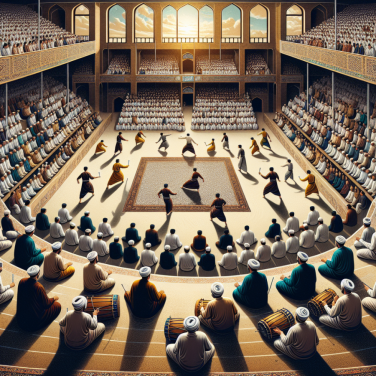Historical Origin and Evolution of the Term 'Pitch'
The term 'pitch' did not just appear out of nowhere. To understand how this term came to be predominant in the world of soccer, it’s essential to delve into the historical origins and evolution of the term.
The term 'pitch' primarily originated in England, around the initial stages of the development of many modern sports, including cricket and football. Back in the day, 'pitch' was generally used to refer to the basic concept of setting up or establishing a distinct area for a specific purpose. This usage was mainly influenced by the veritable nature of the Old English term 'piccian,' which means to 'to pick or cut out,' a concept remarkably similar to carving out a distinct area or pitch to play a sport.
According to the Oxford English Dictionary, one of the earliest recorded uses of the term 'pitch' in a sporting context dates back to the late 16th century. In 1584, 'pitch' was used to describe a designated area of land set up for a game of bowls. Around the same time, the term 'pitch' began being used to refer to the area of land prepared for a match of cricket.
In the 18th and 19th centuries, football and cricket both gained significant popularity, especially in England. These sports often required a well-prepared, designated surface or field for a fair and proper game. During this period, the term 'pitch' began evoking an image of such a prepared surface for sport, a usage that continues to the present day.
Soccer, or football as it is known in most parts of the world, originated in England in the mid-19th century, and the term 'pitch' naturally carried over to this sport as well. The first known usage of 'pitch' to describe a soccer field in English print appeared in the Athletic News, a British newspaper, in 1881.
In the years since, the term 'pitch' has become universally accepted to describe the playing surface for numerous sports, primarily those of English origin. However, it continues to hold particular significance in the footballing world, often used interchangeably with 'field' or 'ground' in describing the area where the beautiful game unfolds.
In conclusion, the term 'pitch' has grown and evolved alongside the sports it is used to describe, becoming an integral part of the lexicon of games like cricket and football.
Read also:
Discovering the Longest Drivers: Which Golf Club Hits the Farthest?
Understanding the Soccer Field: Why it is Not Just any Regular Field
The soccer field, more commonly referred to as a "pitch," is undeniably the heart and soul of the game of soccer. It is on this stretch of grass that all the action unfolds, from the mesmerizing skills exhibited by players to the tactical formations crafted by coaches, and the climactic goals that send waves of euphoria, or despair, to the fans.
Many people might view this pitch as just a regular patch of land with grass, but in reality, this is far from the truth. The soccer field is a hub of science, geometry, and numerous regulations, all aimed at guaranteeing fairness and uniformity in the games played worldwide.
One can start with the size dimensions of the soccer pitch. According to rules set out by the International Football Association Board (IFAB), the length of the field can be between 100-130 yards (90-120 meters), and the breadth 50-100 yards (45-90 meters) for international matches. Grass height also matters - the ideal length is about 28 millimeters, offering the perfect balance for ball speed and player mobility.
Beyond grass length and pitch dimensions, there are the issues of the lines, circles, and the box areas that carry heavy significance in the game. The touchlines are the long boundaries on the sides, while the goal lines are shorter and define where the goals are placed. These lines encase the playing area. The center circle marks the area where players from neither team can enter at the kick-off, and the boxes aptly named penalty areas are where goalkeepers can handle the ball and fouls committed by the defending side can lead to penalty kicks.
The goal, critical to the game's aim, also has regulations. It must be 8 feet (2.44 meters) high and 8 yards (7.32 meters) wide. Moreover, no matter the size of the pitch, the goal's size remains constant. The crossbar paints a definitive line across which the ball has to pass to be counted as a goal. Similarly, the penalty spot placed 12 yards from the goal is a prominent feature on the pitch.
The meticulous execution of these measurements ensures that no team has an unfair advantage and that the conditions of play are almost identical across the world. It’s also a lot about safety. Ensuring that the ground conditions are safe for the players is paramount to all football governing bodies, be it FIFA or the local Sunday leagues.




